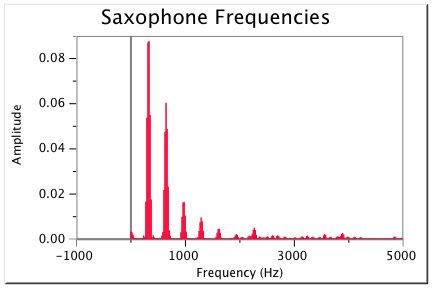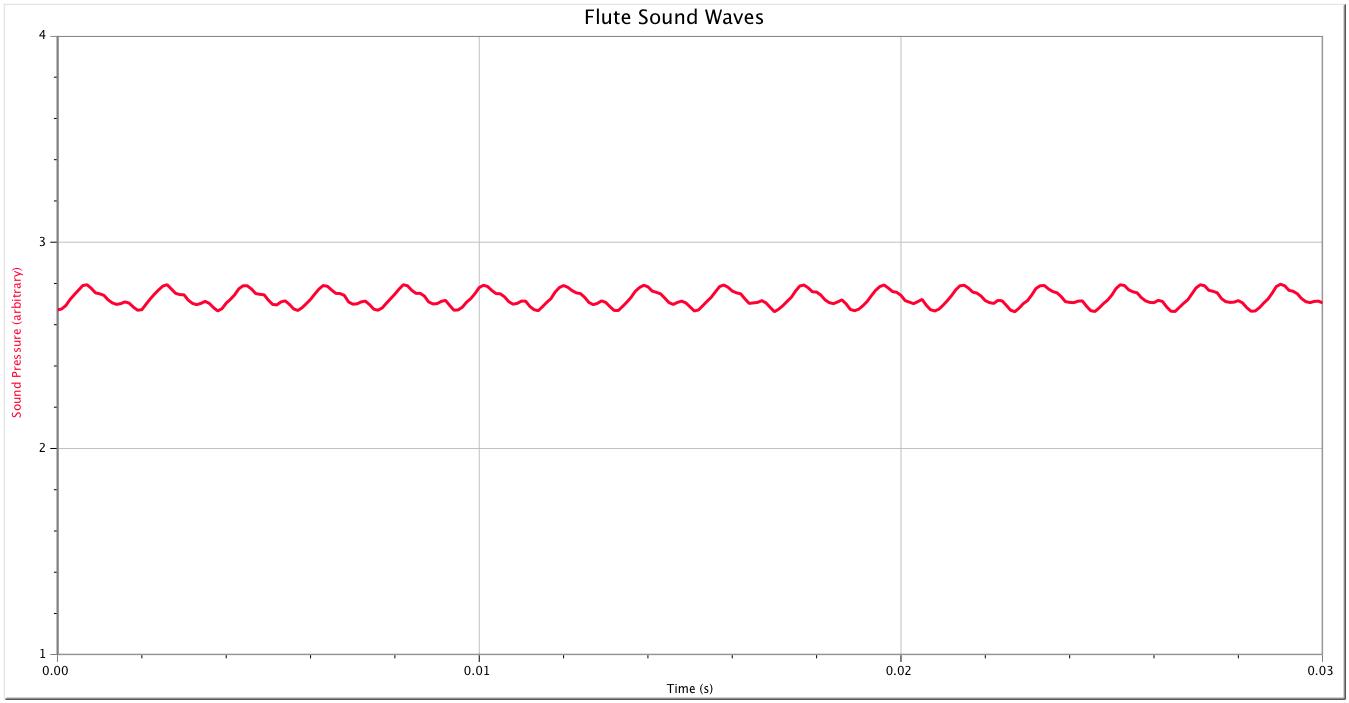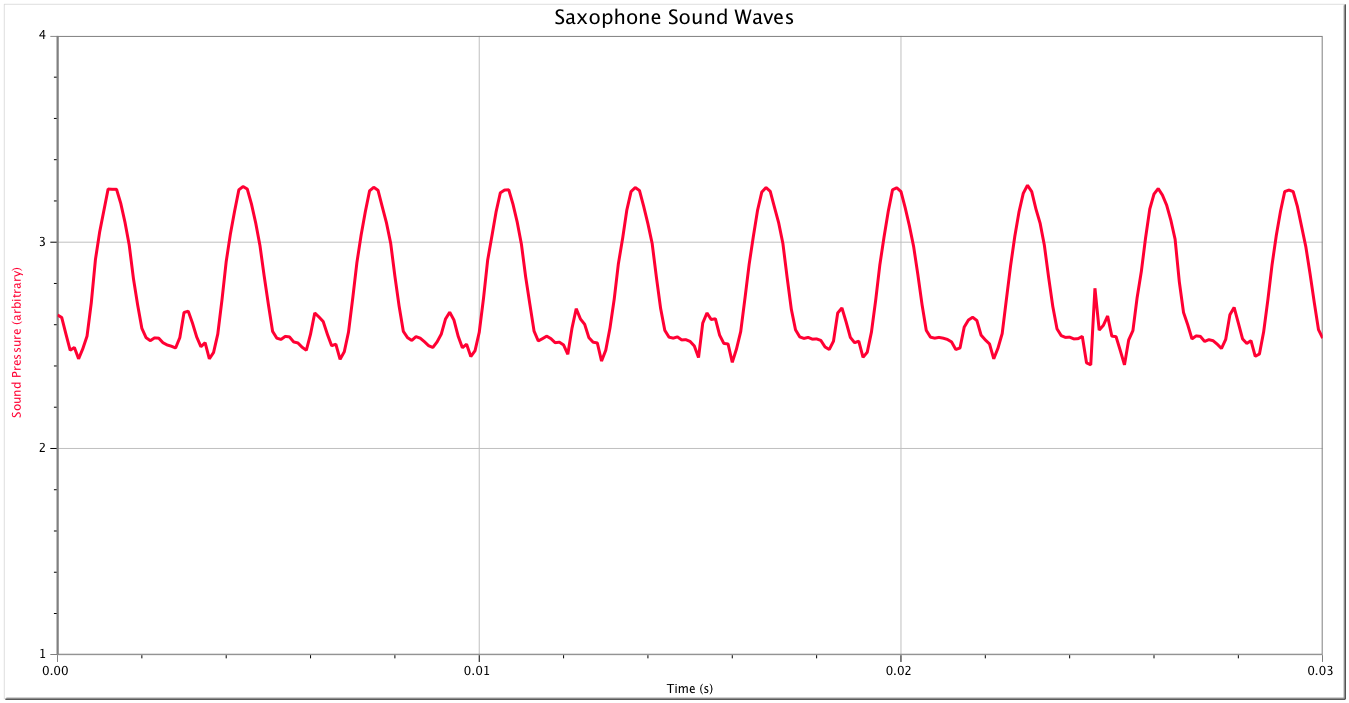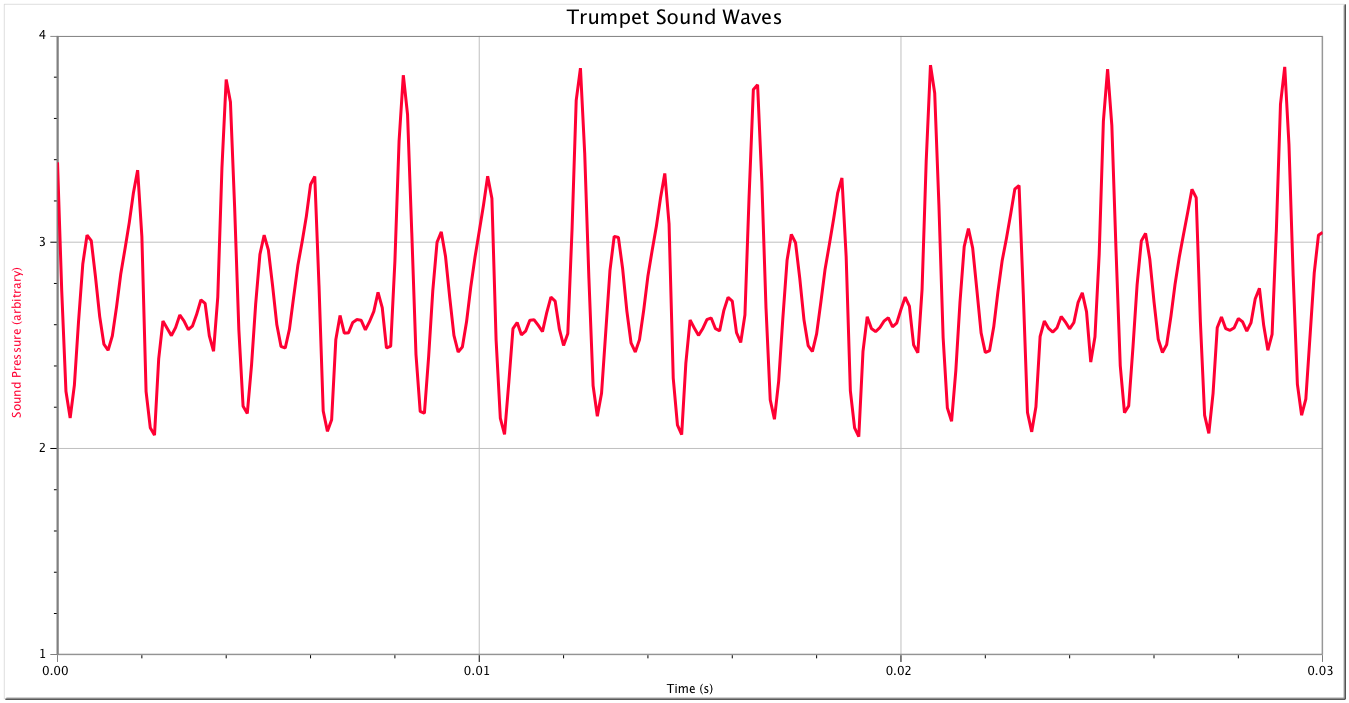This demo shows the wave patterns of three different instruments:
a flute, a saxophone, and a trumpet.
Watch Video:
- Fourier Analysis
- Music & Tones
- Resonance and Harmonics
Theory:
In this demo we look at three different cases for three different instruments: the flute, alto saxophone, and trumpet. While they are only playing one note, the harmonics of each instrument interfere to create the periodic patterns seen in the video. This is due to the principle of superposition.
Sound waves, like the ones found in this demo, are very good examples of superposition. In many cases sound is generated by a range of frequencies, especially on wind instruments with some sort of buzzer on an end. In the case of this demo the saxophone has a vibrating reed acting as a buzzer, whereas the trumpet has the vibrating lips being used to play it. These vibrations generate a large range of frequencies, which can be seen using Fourier analysis.

Figure 1: Fourier Analysis of a Flute Playing a C

Figure 2: Fourier Analysis of an Alto Saxophone Playing a C

Figure 3: Fourier Analysis of a Trumpet Playing a C
The range of frequencies for the three cases in the video can be seen above. The flute has a smaller range of frequencies in comparison to the saxophone and the trumpet. This shows in the sound waves for the flute, which are much smoother in comparison to the other sound waves. This is due to fewer frequencies interfering with each other in the flute's case, versus the large range of frequencies in the cases of the saxophone and the trumpet.
|
Figure 4: Flute Sound Waves
|
|
Figure 5: Alto Saxophone Sound Waves
|
|
Figure 6: Trumpet Sound Waves
|
Note: For a larger view of the sound wave graphs, right-click the picture and select "Open Image in New Window" or "Open Image in New Tab".
Apparatus:
- A trumpet, a flute, and an alto saxophone
- Computer with a microphone and Logger Pro (Alternately, a microphone and an oscilloscope could be used)
Procedure:
- Set up the computer so that Logger Pro is on and ready to record data through themicrophone.
- Assemble all the instruments, making sure they are in tune.
- Play a note on the flute into the microphone, and observe the wave pattern on the computer.
- Repeat the previous step, playing a note on the saxophone and the trumpet and record the data.






